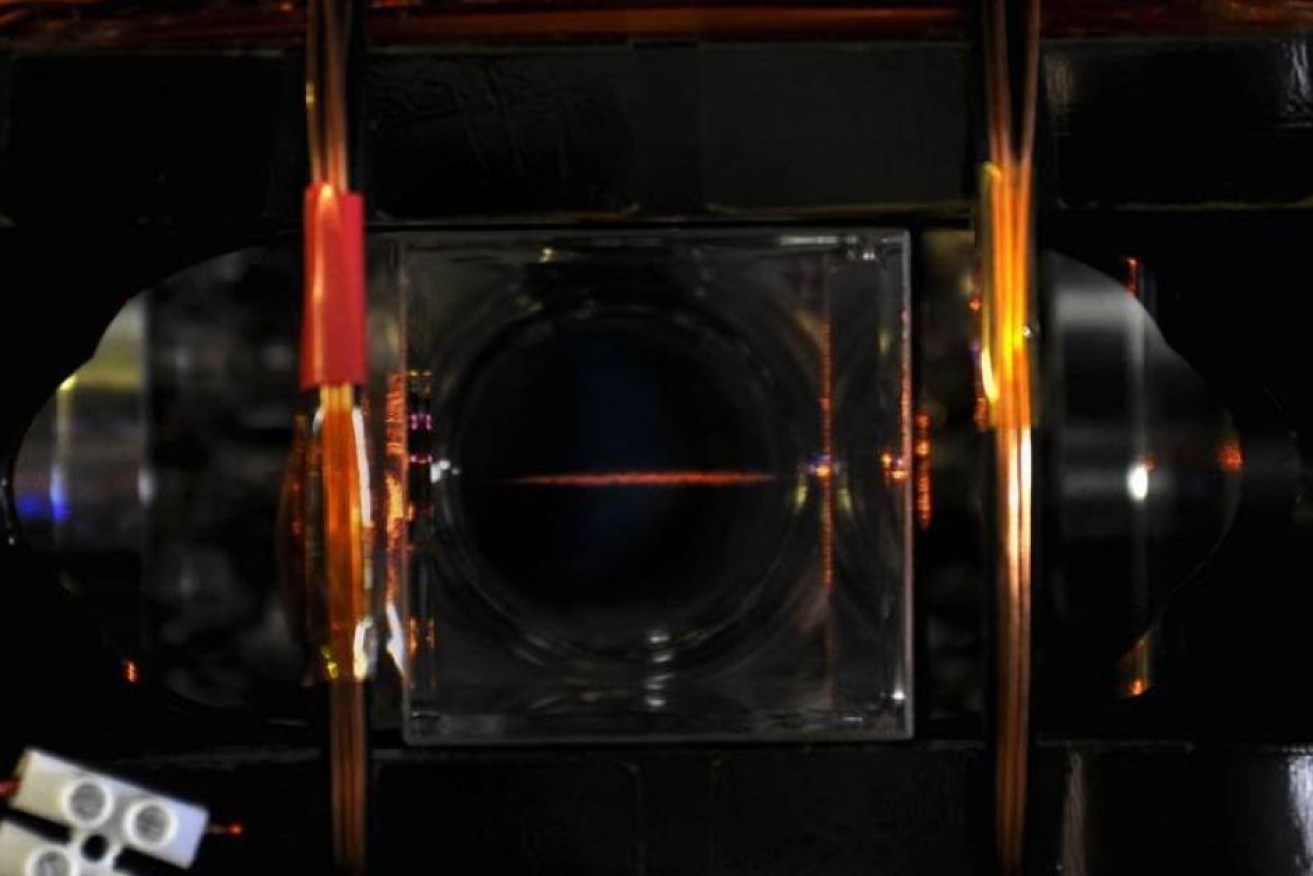Star Wars scene inspires Aussie scientists to stop light

A cloud of atoms, seen here as the red glow in the middle of the image, was used to make the stationary light. Photo: Ben Buchler/ABC
They may not be wearing the robes of Jedi warriors but Australian researchers have stopped light, turning a Star Wars scene into reality.
In the latest Star Wars movie, The Force Awakens, villain Kylo Ren uses The Force to stop a laser blast mid-air as it heads towards him.
Now researchers at the Australian National University (ANU) have done something similar by using a cloud of very cold atoms to stop light moving.
The development, published on Tuesday in Nature Physics, could be used to make a quantum logic gate, which is an important building block in the development of quantum computers, said lead author Jesse Everett, a doctoral student at ANU’s Centre for Quantum Computation and Communications Technology.
“The idea [for quantum computing] is we are trying to get two individual particles of light – photons – to interact,” Mr Everett said.
“The interaction between them [normally] is very weak so if we can get them in the same place for a long time we can increase that interaction so it is measurable.”
While the advance was important for quantum science, Mr Everett said it was also interesting to be able to bring a piece of science fiction to life.
“It’s pretty amazing to look at a sci-fi movie and say we actually did something that’s a bit like that,” Mr Everett said.
How to stop light with science
Associate Professor Ben Buchler, senior author on the paper, said light normally travels around 300,000 kilometres per second.
However he said it was still possible to go faster than the speed of light “not by going faster yourself, but by making light slower”.
Dr Buchler said in their latest study the team had used rubidium atoms which interact very strongly with light at a wavelength at the edge of what was visible to the human eye.
In the experiment these atoms were modified so that when they were hit with lasers they constantly emitted and then re-captured the light.
“The result is you have a cloud of stationary light,” Dr Buchler said.
He said while it was not the first time physicists had stopped light, the system they had developed meant they could show the light was stationary.
“With this experiment we have the best proof that the light is actually stationary because we have taken photos of the atoms from the side that show they are in the right pattern to support the stationary light,” he said.
“Previously, experiments have just inferred the existence of stationary light in an indirect way and although you could believe them it was nowhere near as convincing as this experiment.”
Dr Buchler said another key development was that the system was incredibly stable and self-correcting.
“If you get that preparation slightly wrong, it doesn’t matter so much. Some of the light will leave the atoms, but the remaining light self-stabilises to form a new stationary state of light,” he said.
“No one has ever seen that before.”
What this means for quantum computing
Dr Buchler said quantum computing would rely on developing systems that were sensitive to a single photon.
“It is very difficult for photons to talk to each other,” he said.
“If you can stop a single photon of light, make it stationary and hold it for a long time you might be able to get that single photon to talk very strongly to another field of light or another single photon … that is the building block for a quantum gate which is essential to a quantum computer.”
-ABC








